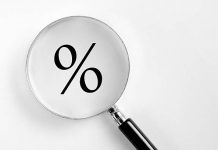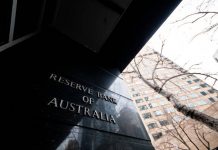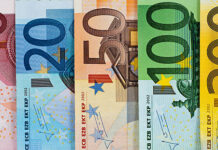Markets
The Republican hattrick trigged the most pure version of the America First trade. US equities, yields and the dollar all jumped sharply higher, betting on a strong, domestic-driven outperformance of the US economy. The Dow (+3.57%), S&P 500 (+2.53%) and the Nasdaq (2.95%) all touched record highs. The outperformance of the Russel 2000 (domestic-oriented small caps +5.84%) was telling. The US yield curve staged an impressive bear steepening move, with yields rising between 8.5 bps (2-y) and 17.6 bps (30-y). A highly stimulative fiscal policy will not only support growth, but also inflation and fiscal deficits. In such a scenario, there is little reason for the Fed to take aggressive action to prevent an unwarranted slowdown in growth and/or the labour market. Markets eased expectations for Fed easing toward the end of next year to 1%, including the expected 25 bps rate cut today. The rise in LT yields also suggests higher fiscal and inflation risk premia , but that’s not what investors currently are focused on. Similar story for the dollar. The greenback jumped sharply against all majors. DXY closed above the 105 handle for the first time since July. USD/JPY jumped to close at 154.6. Japan’s chief currency official Atsushi Mimura this morning already warned that he will closely monitor what he sees as a one-sided move. EUR/USD nosedived from the 1.0930 area to close at 1.0729 as USD strength met euro weakness as markets ponder the potential negative impact from trade tariffs on the EMU economy. Striking in this respect, the euro/German yield curves also steepened, but in a bull fashion. The Germany 2-y yield dropped 12.7 bps. The 30-y added 4.1 bps. Markets apparently concluded that the ECB will have to provide additional support to keep the EMU economy afloat. Given the uncertain outlook on inflation, potentially higher risk premia globally and a weak euro, we consider it too early to draw any conclusions on this topic. In this respect, a new German government also might take a more pragmatic approach on fiscal orthodoxy (cf infra).
After yesterday’s outsized politically-driven repositioning, markets gradually have to return to more normal dynamics, admittedly in a new context. It’s probably too early for eco data (US productivity data, jobless claims) to already pick-up their role, but a Fed-policy decision and press conference from Fed chair Powel deserves attention as a new era emerges. Fed gradualism will most likely result in scaling back the pace of rate cuts from 50 bps to 25 bps. Powell will stick to a data-dependent approach with the Fed taking into consideration all new info. The December forecast/dots will be an important next reference. For now, we don’t fight the rise in US yields, especially not at the long end of the curve. In the 10-y yield, the YTD top (4.735) is the next key reference on the charts. For EUR/USD, a sell-on -upticks approach is favoured for return action to the 1.0601 YTD low. Also keep a close eye at the BOE meeting (25 bps cut expected) with new forecasts. These (better growth, more fiscal stimulus) probably won’t really support governor Bailey’s call for a more activist approach. Yesterday’s Gilts’ underperformance against Bunds was telling. A break of EUR/GBP below 0.83 opens the way to the 0.8250/0.8202 2022 low.
News & Views
The Brazilian central bank accelerated the pace of rate hikes after restarting a hiking cycle in September. They raised their key rate by 50 bps to 11.25%. The monetary policy committee judges that inflation risks are tilted to the upside, coming from a more prolonged period of deanchoring of inflation expectations, stronger-than-expected resilience of services inflation due to a tighter output gap and a weaker than expected FX rate (amongst others via loose fiscal policy stance and higher risk premia). In the meantime, the domestic economy and labor market continue to exhibit strength. Internationally, uncertainty remains on the pace of US economic deceleration, disinflation and consequently the Fed’s policy stance. The pace of future adjustments of the interest rate and the total magnitude of the tightening cycle will be determined by the firm commitment of reaching the 3% inflation target. The Brazilian real overcame USD strength with USD/BRL falling from near all-time highs above 5.80 to currently 5.67.
Germany is heading for snap elections in March of next year after Chancellor Scholz dismissed his finance minister Lindner and called for a January 15 confidence vote in his government which he’ll likely lose. The ruling coalition partners (SPD, Greens and FDP) couldn’t agree on how to plug a €9bn funding hole. Liberal FDP FM Lindner wouldn’t touch on the country’s debt brake to allow a looser fiscal policy stance both to help the ailing domestic economy and to provide more aid to Ukraine. Polls currently put the opposition CDU in the lead.













